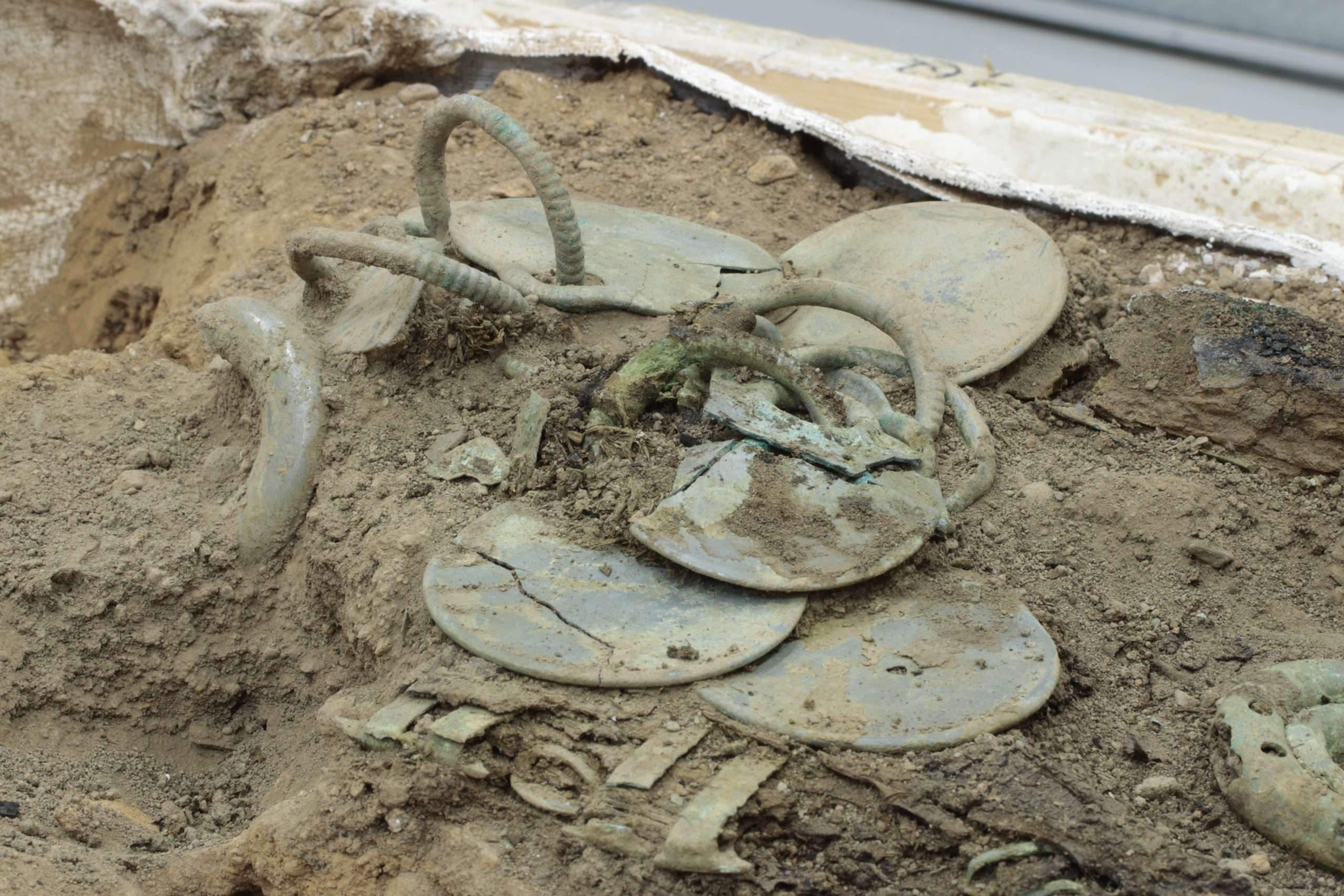One of the most significant hoards ever found in Scotland has been saved for the nation, having been acquired by National Museums Scotland. The Bronze Age Peebles Hoard was discovered in the Scottish Borders by a metal detectorist in 2020. It has since been painstakingly excavated, analysed and catalogued, revealing dozens of rare objects for the first time. Efforts are now underway to secure funding for the continued research and conservation of the hoard and to uncover the secrets of this one-of-a-kind discovery. Dating to 1000–800 BCE, the Peebles Hoard comprises over 500 unusual bronze and organic pieces and components that had lain undisturbed for 3,000 years. It was allocated to National Museums Scotland under the Treasure Trove process, with an ex-gratia payment made to the detectorist who discovered it.
The hoard represents a complex set of material, some of which has no archaeological parallel anywhere in western Europe. This includes many unique artefacts, the use of which is yet to be discovered and could transform our understanding of life in Bronze Age Scotland. Larger and more recognisable objects within the hoard highlight Bronze Age Scotland’s position as part of an international network of communities across the North Sea. Two rattle pendants, the first ever found in Scotland, are more commonly found in Denmark, northern Germany and northern Poland. These remarkable objects are created from interlinked bronze rings and pendant plates that would have hung from a horse or wooden vehicle and rattled as they moved.
Exceptional survivals

Other exceptional survivals include a sword still in its wooden scabbard, as well as an array of small bronze buttons looped onto cords. The hoard also contains rare survivals of minute bronze pins, studs and bosses embedded in wood or leather. The remains of complex decorative straps, the purpose of which remains to be investigated, are preserved still mostly articulated after more than three millennia in the ground. This preservation offers a level of detail and insight not usually glimpsed for the Bronze Age.
The hoard was found by metal-detectorist Mariusz Stępień in 2020, after he initially identified unusual bronze objects and reported the find to the Treasure Trove Unit. This allowed experts from National Museums Scotland and the Treasure Trove Unit to coordinate a complex retrieval process that involved removing the hoard from the ground in a single block and continue excavation and analysis of the find under laboratory conditions. The entire block of earth and Bronze Age material was CT scanned by µ-VIS X-ray Imaging Centre, University of Southampton, a partner institution of the National Research Facility for Lab-based X-ray Computed Tomography (NXCT). This captured crucial details of the internal structure and relationships between materials in their original context.
CT scanning also revealed that some of these objects were produced using ‘lost-wax casting’, a rare technique in Bronze Age Britain. This represents some of the earliest evidence of its use in Scotland. A meticulous excavation by archaeologists and conservators followed at the National Museums Collection Centre in Edinburgh, finally unearthing the fragile components of the hoard after more than 3,000 years hidden underground.
Utterly unique discovery
Dr Matthew Knight, Senior Curator of Prehistory at National Museums Scotland, said: “The Peebles Hoard is exceptional, an utterly unique discovery that rewrites our understanding of both Bronze Age communities in Scotland and our prehistoric international connections. Thanks to the diligence of the finder, expertise of colleagues at the Treasure Trove Unit and National Museums Scotland, and the generosity of the team at the µ-VIS X-ray Imaging Centre, University of Southampton, we have made significant progress. However, more funding is critical to continue our conservation and research, to preserve the hoard for future generations and uncover the stories of Scotland’s ancient past.”
The many unique survivals in the Peebles Hoard, most notably fragments of fragile organic material, require essential conservation to prevent further deterioration and to carry out critical research. To this end, National Museums Scotland is launching a fundraising campaign to support the urgent costs of conserving the hoard and unlocking its enormous research potential.
Main photo: A selection of Bronze Age bronze objects from the Peebles Hoard. Photo: © National Museums Scotland.

